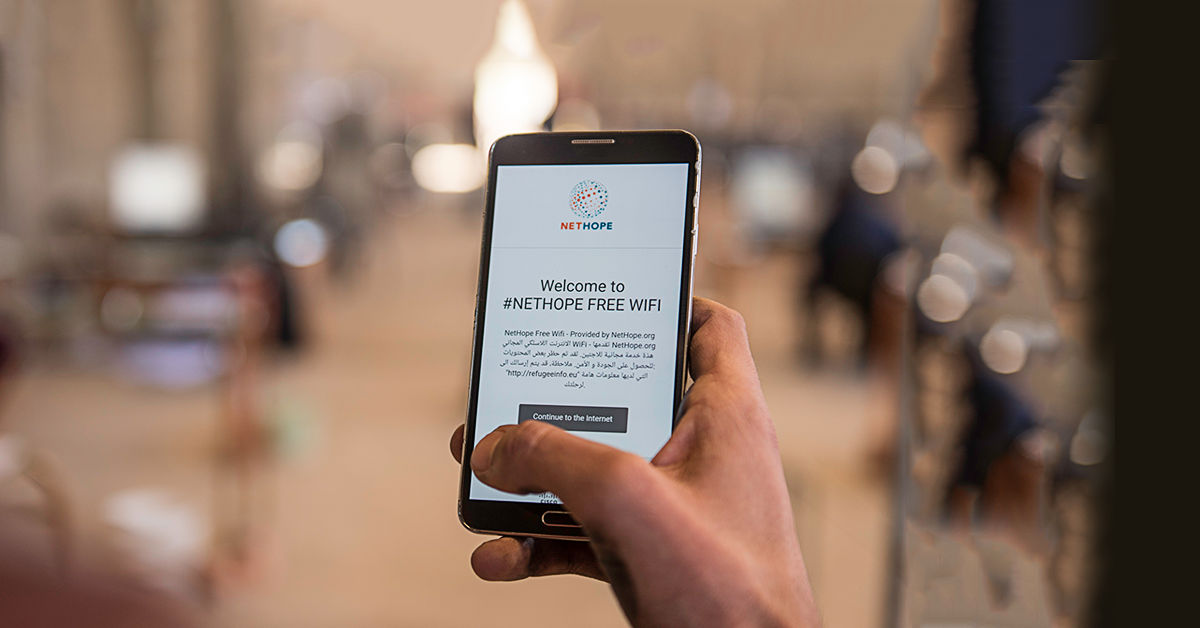Reflecting on Twenty Years of NetHope

Reflecting on Twenty Years of NetHope
By Tae Yoo
NetHope is a journey that we needed to take.
Cisco started the Networking Academy program in 1997 with the intent of teaching students – whether they were in the technology field or not – to design, install, and maintain networks. Most importantly, we wanted the program to help people around the world gain a seat at the digital economy table. By the early 2000s, we realized the impact the program was having and wanted to expand it. However, we found that many countries and communities (in both the wealthiest and least-developed nations around the world) lacked the connectivity needed to facilitate skills training. Concurrently, NGOs and nonprofits providing life-saving services and economic development were encountering similar challenges that were prohibiting them from accelerating their own missions and creating meaningful breakthroughs.
Around that same time, I was on a personal journey, looking closely at technology and its impact on international development. I made a small donation to CARE in 1999 to fund communications equipment in India. When the Bhuj earthquake occurred in 2001, they were able to leverage this equipment in ways I hadn’t initially considered. After installing the equipment on top of a local church, I remember seeing pictures of people lined up around the building as they used it to communicate their status and needs. I realized that in times of crisis, the communications infrastructure becomes an integral part of response and recovery. The ability to connect becomes just as important to impacted communities as providing them with other basic needs like food, clothing, shelter, and safety. It enables organizations and individuals to reach out and tell the world what is happening, where there’s danger, and how to bring in the right resources to the right places.
The power of partnerships
These experiences illustrated the huge potential for IT and technology to help free up NGOs to focus on their most meaningful work, providing services on the ground to communities in need instead of figuring out how to make the technology work. Cisco was committed to further exploring this opportunity by bringing our technology and expertise to bear, and by doing what we always do – looking for partnerships to help drive improved outcomes.
Early on, we were fortunate to meet Ed Granger-Happ, CIO of Save the Children. Save the Children had the rare luxury of having a CIO when most NGOs did not. This was a very pivotal moment. We found a like-minded organization with a CIO who really understood the impact of technology and wanted to aggressively pursue the role it could play in humanitarian response. We shared the beliefs that international nonprofits could solve the connection problem better, faster, and cheaper if done together; and that nonprofits would be in a better position to partner with corporate sponsors as a group.
The best use of technology and the power of our collective partnership was to lay the groundwork for a strategic, long-term, predictive, and reliable approach to addressing crises and development. To that end, we spent time in the field with NGOs – large and small – to validate our concept. In doing so, we found that they all had the same request – they needed a better way to connect. These interactions provided us the opportunity to have not just a technology conversation but also uncover the value of strong partnership in the field. This was the beginning of what turned into NetHope.
Shortly following those initial conversations, Cisco seconded some very talented engineers, Cisco Fellows Dipak Basu and David Yang, to this project, who worked together with Ed to flesh out the concept of NetHope. Just like they would in their jobs at Cisco, both Dipak and David were measured with goals tied to the success of NetHope. Dipak went on to become the first executive director of NetHope, and together with Ed and David, this small, committed team was able to successfully incubate NetHope, which has since evolved into a multiyear, $16 million commitment to date from Cisco.
However, no one could do this alone. We knew from the beginning that partnerships would be paramount and that it would take others – not just within the nonprofit sector but also within the private sector – to execute our vision for NetHope. So, we engaged two Cisco partners, Microsoft and Intel, which was the start of what would become a multi-corporate partnership with NetHope.
Together, we began to operationalize NetHope. Our initial goal was for NetHope to be an independent organization, working in close collaboration with a consortium of international nonprofits to accelerate impact through its use of technology. Over the following two decades, several Cisco employees would be seconded full time to partner with the NetHope team, including many of its members, as we continued to expand and adapt while incorporating new technologies and methodologies to address disaster response and humanitarian development.
Learning and evolving over twenty years
Whether it’s earthquakes, cyclones, Ebola, floods, the COVID-19 pandemic, or the refugees and migrant communities who are impacted, NetHope and its member organizations have been in the center of responding to crises and supporting communities across the globe and leveraging technology to do so.
I had the opportunity to be on the ground in Puerto Rico and Uganda. There I saw firsthand the critical need for communications technology and the powerful role it can play. This includes securing identities for refugee communities, providing access to education and economic development, helping people rebuild their lives after a disaster, and enabling local nonprofits to accelerate their impact. There are incredible learnings gained from those working directly in the field with our beneficiaries. As a NetHope technology partner, we’re able to glean insights, trends, gaps, and needs from them that, in turn, enable us to understand what’s most critical and how best to apply or direct our assets and resources.
Those insights help drive the ongoing evolution of our Cisco Crisis Response team that deploys in partnership with NetHope and its members to provide connectivity in times of crisis. Through this collaboration, our Crisis Response team can test for austere environments that then help inform our own product tweaks and ruggedization.
As all technologies continue to change, the NetHope community evolves with it, leveraging existing technologies in new ways or incorporating emerging technologies to expand and grow our collective reach, impact, and results.
The role of technology
As we look ahead to the next twenty years, the future is going to require constant adaptation and breakthroughs. This is nothing new. However, change is happening at a much quicker rate than it used to.
By embracing a culture of thinking differently, we can identify new ways to leverage emerging technologies to help us better anticipate and prepare by enabling earlier, faster, and more effective action. Some examples that we’ve been talking about over the past few years include:
- Artificial intelligence (AI) can help analyze and interpret complex humanitarian data sets, leading to improved decision-making. During the COVID-19 pandemic, AI helped with outbreak mapping, diagnosis, and the development of vaccines.
- We’ve also seen an explosion of mobile apps, chatbots, and social media that can create immediate feedback and communication loops for people affected by a crisis.
- Unmanned aerial vehicles (UAVs) can speed up the assessment and monitoring of vulnerabilities while reducing physical risk to aid workers. During the pandemic, they were used to deliver medical supplies and testing samples.
- We’ve seen how digital cash can provide rapid and flexible assistance. It not only creates an easy, accurate, and secure way for people to obtain and transact, but it also gives dignity to those affected, enabling them to make decisions and take charge of rebuilding their lives.
- Finally, biometrics can help establish digital identities and reconnect families. This isn’t only true in a global pandemic or crisis, but biometrics can be used in every community. Think about your local homeless shelter where people may lose or have their identification papers stolen as they move from shelter to shelter. In this case, biometrics can be used to speed up the delivery of services for those who find themselves in this situation.
Along with the promises of technology comes a whole array of complex challenges and risks. We need to make sure the technology we employ doesn’t cause harm, intensify insecurities, widen the digital divide, or hinder the delivery of humanitarian response. This reinforces the need for technology to be used responsibly and requires constant vigilance in how we’re developing and using it. Because when created and used responsibly, it can have a dramatic, positive impact on all the communities we serve.
Looking ahead
The past twenty years have seen recognition of connectivity as a basic need in humanitarian emergencies. In the coming decades, technology can further enable earlier, faster, and more effective humanitarian action. But technology is not an end in and of itself. It must go hand-in-hand with efforts from all of us to ensure that it is responsible, sustainable, and inclusive and that it protects, above all, human life and dignity.
By converging efforts across the public and private sectors and NGOs – in partnership with community leaders – we can use technology to powerfully accelerate and magnify our impact while enabling transformation in the years to come.
I look forward to working with NetHope and all its members as we continue to evolve this work.
See how NetHope is expanding impact through technology.

